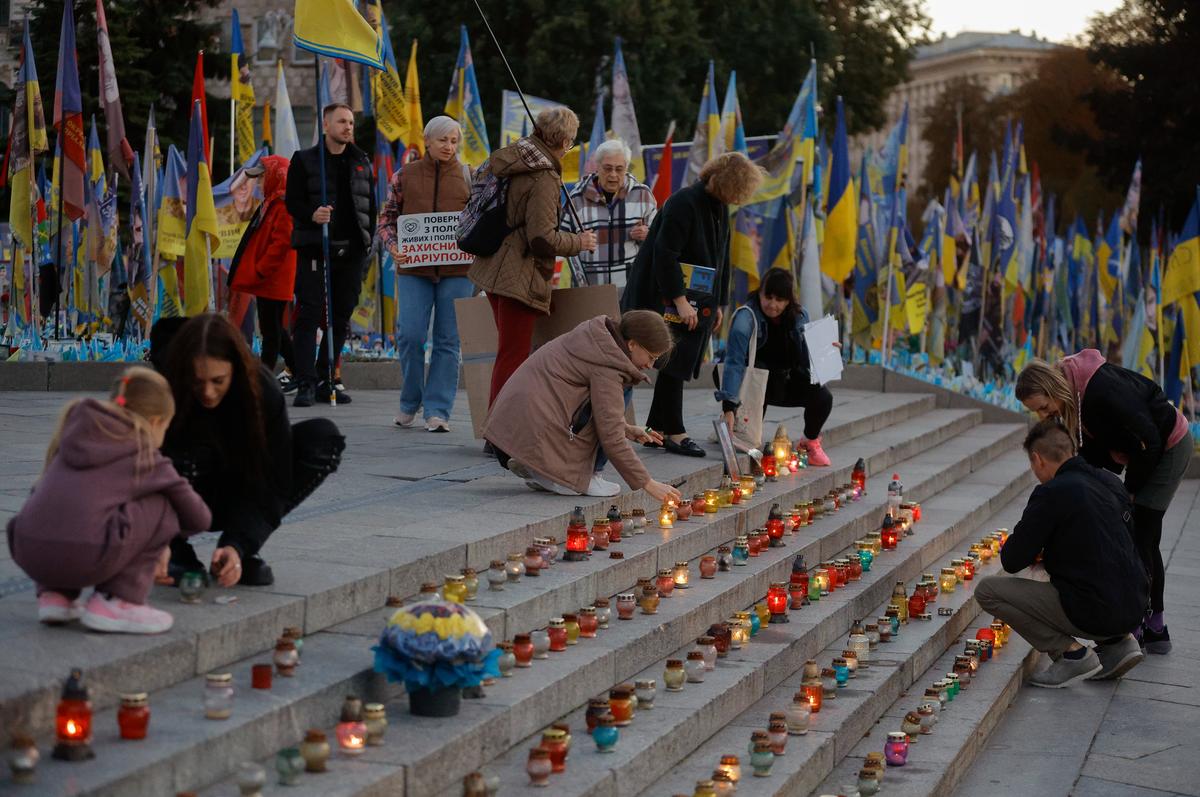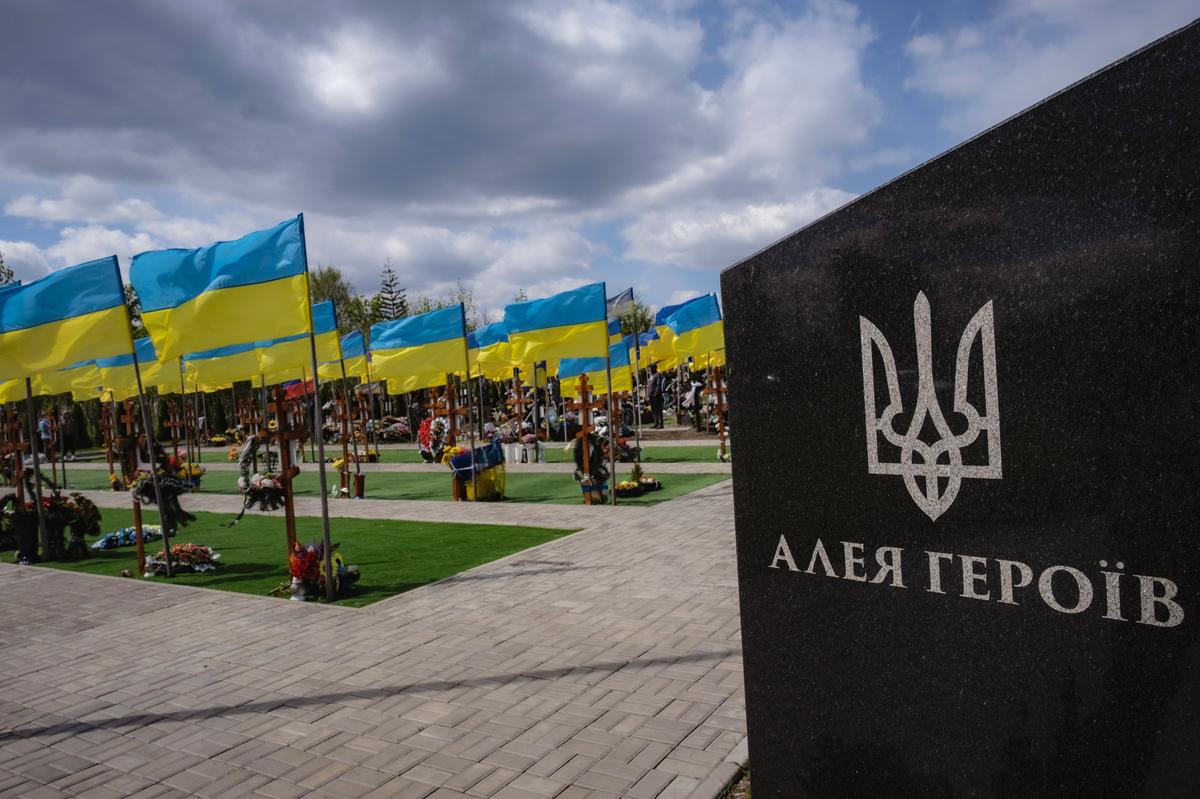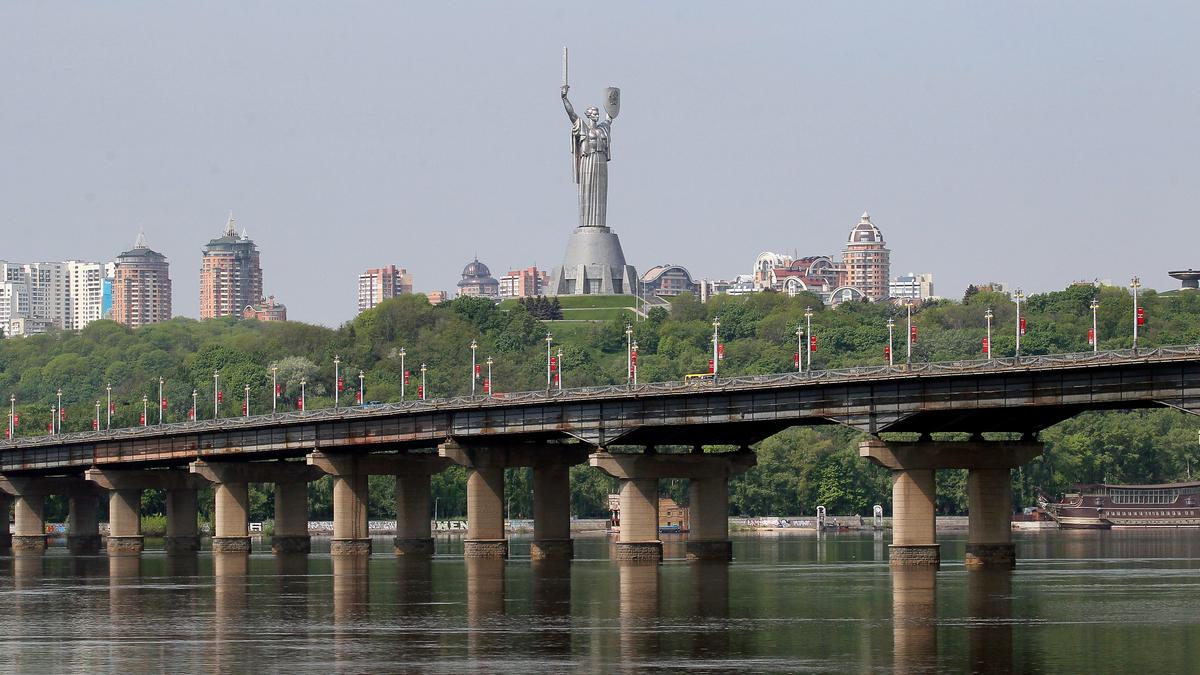Three and a half years after Russia invaded Ukraine, there are few immediate signs of a cessation to the ongoing hostilities. Yet amid the steady toll of frontline fighting and near-daily Russian airstrikes, Ukrainians are already considering how to remember the tens of thousands of lives lost over the course of this conflict.

Kerry Whigham
Associate professor of genocide and mass atrocity prevention, Binghamton University, State University of New York
A spontaneous memorial of flags and photographs already exists and grows daily, having first sprung up in 2022 in Kyiv’s Independence Square. Now, government and civil society groups have begun conversations on how such acts of commemoration can be made more permanent through monuments and memorials across the country.
As a scholar of public memory and how societies remember large-scale violence and mass atrocities, I study and support the work of governments and organisations developing memory sites around the world. As Ukraine negotiates its own related challenges, lessons from research on how memorials have changed and the role they can play in post-violence societies can help guide these processes.
Traditionally, war memorials used monumental architecture to remember those who died during conflict.
The impulse to create public monuments to remember collective death, like war, is millennia old. The first known war memorial dates to over 4,000 years ago in modern-day Syria. Obelisks and triumphal arches that dotted ancient Egypt and ancient Rome have served similar purposes.
As societies have progressed and architectural tastes have changed, so too have war monuments. Still, there are some underlying traits that have remained relatively consistent for thousands of years.
Traditionally, war memorials used monumental architecture to remember those who died during conflict. Typically, they were aimed at honouring soldiers who died fighting for their country. The monuments framed the death of soldiers as a sacrifice for a higher cause, often using larger-than-life architectural elements and materials like marble and granite to convey a sense of both grandeur and memory permanence.

A makeshift memorial to Ukrainian servicemen and international volunteers on Independence Square in Kyiv, Ukraine, 26 September 2025. Photo: EPA / Sergey Dolzhenko
In that traditional vein of glorification, war memorials typically feature recognisable symbols, like sculptures of soldiers and inscriptions with names or information. By honouring the soldiers who died fighting a war, the monuments also legitimise the war and the state that waged it, marking it as a cause worthy of dying for. In this way, such war memorials are not only about revering soldiers but also venerating the nation-state.
That all started to change following World War I, however. The scale of destruction and death was so widespread and total that countries began erecting war memorials depicting soldiers with their faces downcast or their bodies tired. The sacrifices of the soldiers were still framed as valiant, but the monuments also revealed a war weariness not present in earlier memorials.
The Holocaust changed everything about the way the world memorialises large-scale death.
At the same time, communist countries in Eastern Europe and the Soviet Union maintained the tradition of using memorials to celebrate the state. In Soviet-era Ukraine, for instance, the 102-metre Mother Ukraine was erected to tower over Kyiv as a monument to World War II.
Outside of the former Soviet Union and Eastern Bloc, however, the horrors of World War II completely transformed the way societies memorialised collective death. This is largely because the deaths that needed commemoration were not only those of soldiers but of the millions of civilians murdered by the Nazi regime, especially European Jews.
Indeed, the Holocaust changed everything about the way the world memorialises large-scale death. The architectural language of the war memorial was completely insufficient for remembering the victims of genocide. They did not sacrifice themselves to the glory of the nation, but instead were slaughtered by governmental leaders.
As a result and over time, memorials focused far less on monumental forms and realistic imagery glorifying the state and opted for abstract and immersive styles intended to invoke a sense of loss and a commitment to preventing future violence. These memorials to victims of genocides and other atrocities also respond to an increasingly recognised “right to memory”, as victims demand acknowledgment of the trauma they have experienced.
One of the most influential examples of how memorialisation has changed is the Memorial to the Murdered Jews of Europe in Berlin. Designed by American architect Peter Eisenman and inaugurated in 2005, it features over 2,700 concrete columns arranged in a grid over almost five acres of land in central Berlin. Visitors are invited to walk through the grid-work of columns, which are meant to evoke an emotional response in visitors.
Ukraine has lost both soldiers and civilians. Can and should these losses be memorialised together?
Echoes of this abstract and immersive space can now be seen in numerous other memorials to collective death globally, including the National Memorial for Peace and Justice in Montgomery, Alabama, which memorialises the Black victims of racial terror lynchings in the United States, and the Parque de la Memoria in Buenos Aires, Argentina, which remembers the thousands of people disappeared in the 1970s and 1980s during a military dictatorship.
As Ukrainians begin the process of determining how best to commemorate their own recent losses, they face some notable challenges. For one, Ukraine has lost both soldiers, who have died fighting for their country, and civilians, killed through the attacks of invading forces from Russia. Can and should these losses be memorialised together? Or should there be separate memorials to those who died on the battlefield and those others who were killed in atrocities, like the massacre in Bucha of March 2022, which saw the death, torture and rape of hundreds of civilians, including children, by Russian forces?
Ukraine is not without experience in memorialising both war and atrocity. Many of its war memorials were constructed during the Soviet period, however, so they tend to utilise the socialist realism style that characterises most communist-era monuments. But Ukraine has also experienced atrocities, such as the Holodomor, the human-made famine implemented by Joseph Stalin in the 1930s that led to the deaths of millions of Ukrainians. The Memorial in Commemoration of the Holodomor-Genocide in Ukraine opened in Kyiv in 2008, 75 years after the Holodomor began.

Ukrainian flags fly at Kramatorsk’s Alley of Heroes in eastern Ukraine’s Donetsk region, 27 April 2025. EPA/MARIA SENOVILLA
But determining how to memorialise more recent violence can be a challenge. Memorials serve to literally and figuratively concretise memory. But memory — that is, the story a society tells itself about its past and its impact on the present and future — evolves over time. Communities of victims may desire a memorial as a recognition of the harms that they have suffered, and this can indeed be an important step in symbolically repairing those damages.
But it may be difficult to get a full “picture” of the story a memorial should tell while violence is ongoing. The victim count is increasing every day. And now there is also some pushback within Ukraine against the way President Volodymyr Zelensky is governing and approaching issues of internal corruption.
Ukrainians had 75 years to determine how they wanted to relate to and remember the Holodomor. With so much uncertainty, any memorial built now to the current war may need to be reconsidered in the very near future as government officials, victim groups and other stakeholders continue to discuss how they want to remember this violence.
But building a memorial will not, in itself, mark the end of the conflict and, as such, may be putting the cart before the horse.
Today, many experts and practitioners advocate for conversations on memorialisation to take place alongside other processes that societies undergo to deal with histories of violence and human rights abuses. Often labelled “transitional justice”, these processes of truth-seeking, justice, reparations and reform can complement processes of memorialisation. Engaging actively with all the consequences of past violence can be crucial in developing a consensus on how to remember that violence and educate future generations about it.
Undertaking such tasks while violence is ongoing, however, can be difficult, if not impossible. The underlying instability caused by war, along with the uncertainty around what the future will bring, leaves so many open questions that it may be too soon to start answering them. That said, the groundwork can be laid now so that these processes can begin as quickly as possible once the war finally comes to an end.
Ukrainians are understandably ready to move forward and deal with the repercussions of this horrific violence. But building a memorial will not, in itself, mark the end of the conflict and, as such, may be putting the cart before the horse. Victims have a right to memory, but they first and foremost have a right to peace. The picture of what story should be told through public memorials and monuments will become clearer once it is not so obscured by the fog of war.
This article was first published in The Conversation. Views expressed in opinion pieces do not necessarily reflect the position of Novaya Gazeta Europe.
Join us in rebuilding Novaya Gazeta Europe
The Russian government has banned independent media. We were forced to leave our country in order to keep doing our job, telling our readers about what is going on Russia, Ukraine and Europe.
We will continue fighting against warfare and dictatorship. We believe that freedom of speech is the most efficient antidote against tyranny. Support us financially to help us fight for peace and freedom.
By clicking the Support button, you agree to the processing of your personal data.
To cancel a regular donation, please write to [email protected]

